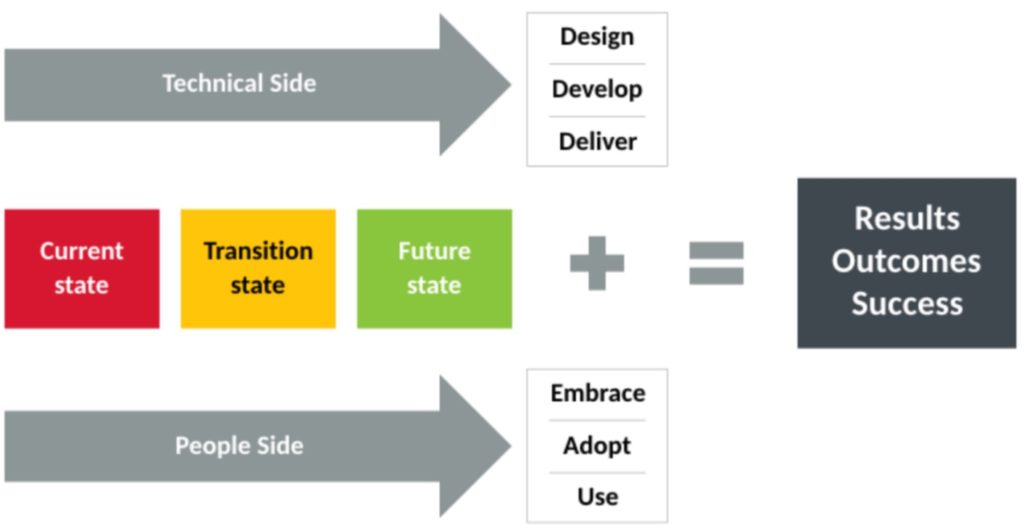Introduction to Change Management
By Michael Sinnott, UCD Agile
At a higher education conference last summer I came across a change management framework developed by a group called Prosci (https://www.prosci.com/). Prosci stood out because so many of the folks at the conference used Prosci in doing their day to day business in university administration – it was simply part how they approach change. We in Agile thought we would try the fit with UCD and so I wanted to bring this to your attention.
We have a number of colleagues taking part in our green belt training at the moment and have included an introduction to Prosci change management in the training. Why? Projects in Lean look to get to the heart of a problem, fix it, and put in place a solution which sustains the gains made in the project. Sustainable change is the goal. Change management is about taking folks on the journey from some current sate to some future state, helping them through the transitions.
Change management is not just relevant for projects and initiatives of some technical kind. We often look to change how people behave, planning communications campaigns to create some future state of behaviour. Change management helps answer “How can I best ensure I get the change I want?”
When you look at change from a high level it is easy to think in somewhat abstract terms like ‘project’ and ‘organisation’ and ‘communications’.

But all such change is about people – about all the individuals affected in their different ways and helping them on a journey.

Project management helps you get done what you planned to do – deliver the technical side of a change. But there is also the people side of the change – the sustainable outcome you are looking for – that the changes you have made become the new ‘how we do things’ or ‘how we understand things’.
In order to meet a project’s objectives, keep on time and on budget, and deliver the outcome sought, you need both the technical delivery and the management of change for the people affected.


If you look at what you are changing, and how many people this will affect, you get a sense of the need and value of change for what you are doing.
If your project or initiative only affects one person – go and talk tot them. If you list out the categories of folks affected by what you plan, and the number of folks in each of those categories, and the complexity/variety of what is involved, the argument for the need to management the people side of change can be quite compelling. “If that many folks are affected, we need to do something to manage the change for them”.
At the conference last summer one of the presentations showed how Prosci’s approach to change management had been used to help deliver the success of a Lean project, and that is why we are including it in our green belt training at the moment. But this is just one example of where Prosci’s approach to change management can be used. We will let you know how this goes in the current projects. If you would like to know more, be sure to contact agile@ucd.ie.
